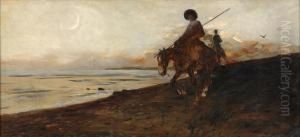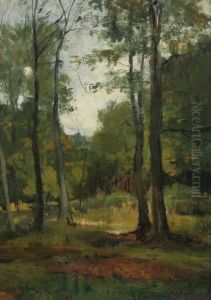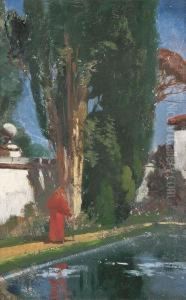Hermann Emil Pohle Paintings
Hermann Emil Pohle was a German artist known primarily for his landscape paintings. Born on October 4, 1844, in Leobschütz, which was then part of Prussia (now Głubczyce, Poland), Pohle developed an interest in art at an early age. Unfortunately, detailed information about his early life and training is somewhat limited as he was not among the most prominent artists of his time, and much of the available data on such artists can be sparse.
Pohle's work is characterized by its tranquil portrayal of nature, often focusing on the beauty of rural Germany. His paintings frequently depict serene forest scenes, gentle rivers, and pastoral landscapes that resonated with the Romantic sensibilities of the 19th century. This was a time when artists were moving away from the grand historical and mythological subjects to find beauty and meaning in nature and the everyday life of common people.
During his lifetime, Pohle would have been influenced by the various movements of the 19th century, including Romanticism and later the Impressionist movement, which began to take hold in the latter part of the century. However, his work remained true to the more traditional and detailed approach of landscape painting, rather than adopting the looser brushwork and lighter palette of the Impressionists.
Throughout his career, Hermann Emil Pohle exhibited his works at various venues, including the prestigious Berlin Salon, which was a key platform for artists to display their works to potential patrons and the wider public. His artwork, while not as widely known as some of his contemporaries, contributed to the rich tapestry of 19th-century European art and offered a window into the serene and picturesque landscapes that were cherished during this period.
Hermann Emil Pohle passed away on January 3, 1916, in Berlin, Germany. His legacy is preserved through his paintings, which continue to be appreciated by art collectors and enthusiasts of 19th-century landscape art. Although not a leading figure in the art world, his dedication to capturing the essence of the natural world has ensured that his work remains a part of the historical record of German art.


